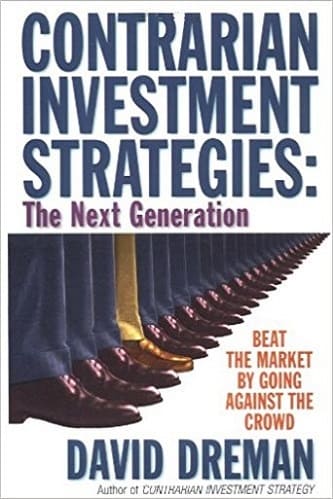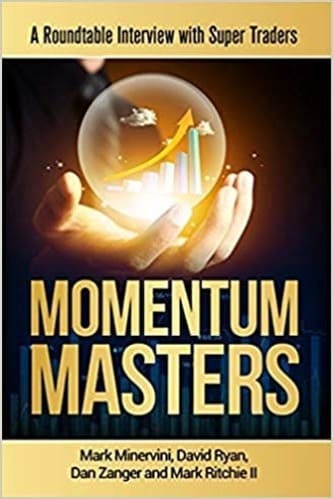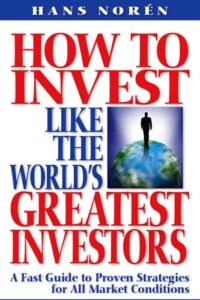Articles
Philosophy of Trading By Les Clemens
Most people begin trading because they have heard about someone making a million dollars in a year’s time and believe it is the easy road to riches. Beginning traders seem to fall into three sets of circumstances. First: they get lucky on their first trades and make a lot of money. This leads them to believe the game is easy, so they start over trading. Within a year or two they take a big hit and their trading career is finished.
Second: they start trading with a small amount of capital and have moderate success in the beginning with winning and losing trades about evenly balanced. After a time they become impatient and increase their trading size. An unexpected event in the market occurs and all their capital is wiped out on one trade. They have no more money to put in and are forced to quit. This type person will eventually raise more money, start trading again, but probably will never succeed because they did not learn from their previous mistakes.
Third: they begin trading with limited capital and the losses are greater than the winnings. Over the next year or two the performance is up and down, but the losses increase and more capital has to be added to the account. Gradually the losing trades become substantial, the commissions add up and the question arises whether to continue trading. The decision is made to continue for another year to see if the situation can be turned around. More capital is injected and, fortunately, this trader has more capital to add. Finally, the trader becomes more experienced and trading success improves. Also, as time passes, the trader reads many books on technical analysis and attends trading seminars. The combination of the two adds to the trader’s knowledge enabling him to become a consistent winner. The determination and persistence of this trader has made the difference. As W. D. Gann stated: “The difference between success and failure in trading commodities is the difference between one man knowing and following fixed rules and the other man guessing.”
Most Difficult Task
To become a successful commodity or stock trader may be the most difficult task undertaken in your lifetime. Since the beginning of trading, speculators everywhere have been in search of the Holy Grail (the so-called perfect trading system). The trading system with no losses is non-existent. If everyone were winners, there would be no one to finance the game. The ratio of 90 percent losers and 10 percent winners, or 95 percent losers and 5 percent winners (depending on whose figures are used), has always been true in the past and will remain the same in the future. As you can see from the ratios, a small minority of large traders become wealthy from losses incurred by a large majority of smaller traders. This ratio of losers to winners is approximately the same ratio of wealthy people to the middle-class and poor. Did anyone ever say “life is fair?” Hundreds of trading systems have been developed over the years in an attempt to take the most money out of the market. Many of these systems are really old techniques being revived. Of all these trading systems, only a small percentage are consistent winners. You must find the best trading system available and develop the discipline to follow its rules if you are to become a successful trader.
The Future is but a Repetition of the Past
Some people say that charts are of no value in determining the future; that they simply represent past history. That is correct. They are records of the past, but the future is nothing but a repetition of the past. Every businessman looks at his past business records to determine how to buy goods for the future. He judges by comparison with past records. We look up the record of a man and if his past has been good, we judge that his future will also be good.
Charts are simply a picture, showing market activity more clearly than words can convey. The same thing can be said in words, but is grasped more quickly when seen in chart form. A man’s good or bad physical qualities can be recognized more quickly from his photograph than from a written description of him. To quote the old adage, “A picture is worth a thousand words.”
Suggested Books and Courses About Investment
Tops and bottoms in all markets are formed by patterns which repeat over and over again at different times. Once you learn to recognize these patterns (signals) you will know when to reverse your position. As the Bible says, “The thing that hath been, it is that which shall be; and that which is done, is that which shall be done; and there is no new thing under the Sun.” This shows that history is but a repetition of the past and that charts are the only guide we have of what commodities or stocks have done in the past and by which we may determine what they will do in the future.
The Trend Is Your Friend
The trend of a market registers the dominating force currents from traders all over the world. It is the buying and selling of all trades and contains the condensed opinion of the majority. The trend monitors the greed, hopes and fears of traders everywhere who are trying to “strike it rich.” The trend is a very reliable guide and barometer of supply and demand, it is really the great scale in which the weight of all buying and selling is weighed and the balance of supply and demand shown by the loss or gain in prices.
When supply exceeds demand, prices decline to a level where supply and demand are about equal. At this stage the daily price ranges become narrow and it may take weeks or months to determine which way the next move will be. When demand exceeds supply again, prices will advance. The Trend always tells the truth, but the trick is, can you interpret it correctly? I always tell people, “The way to beat the market is to become an expert chart reader.” This really means you must have the ability to recognize when the trend of the market has changed and then, of course, have the discipline to take a position with the trend. Time and price are the two main factors that make up a market trend. They are constantly trying to seek equilibrium or balance. The market always shows the stronger force – buying or selling, and that is what causes the trend. The trend is up as long as buying is stronger than selling and the trend is down as long as selling is stronger than buying.
Another favorite saying of mine is, “The time to look for a trend change is not as important as knowing when the trend has changed.” Once the trend has changed and you take a position with the trend, you must have strong will power and a mind that cannot be influenced by news, false rumors, others’ opinions or hearsay. You must stay with the trend until the chart definitely shows you the trend has reversed. A good mechanical trading system will tell you when the trend has changed. This is what W. D. Gann meant when he said, “Let the market tell its own story.” In the trend of the market there are many minor changes and quick reversals that I call noise or jiggles. The market consists of three trends – the main trend, the intermediate trend and the minor trend. The intermediate trend is the one I like to follow, as it produces good profits and allows you to stay in the trade for a fair amount of time.
In short, if you have a mechanical trading system that follows the trend and reverses when the trend changes, you will make a lot of money over time. As Gann said, “If it’s time to liquidate your long position, it’s also time to go short.” Now, do you see why I say, “The trend is your friend?”
Use a trading system that is mechanical and rather simple to understand. The more mechanical the trading system, the easier it is for a trader to control his human emotions – hope, greed and fear. As W. D. Gann said, “The market does not beat you, it is your own human weakness that causes you to defeat yourself.” Follow the rules of your trading system with extremely strict discipline. Never try to lead the market, form an opinion of which way the market is going or ask others’ opinions. Never try to pick tops or bottoms, as most traders who attempt to do so lose. You can become wealthy by taking profits of 1/2 to 3/4 from each trading range. Wait until the market shows a definite change in trend and then follow it. If you trade with the trend at all times and always use stop-loss orders, you will become a very successful trader. I am closing with my favorite words of wisdom form W. D.. Gann which I recite at the beginning of each trading day, “Prepare yourself for the unexpected to happen, which it usually does.”




